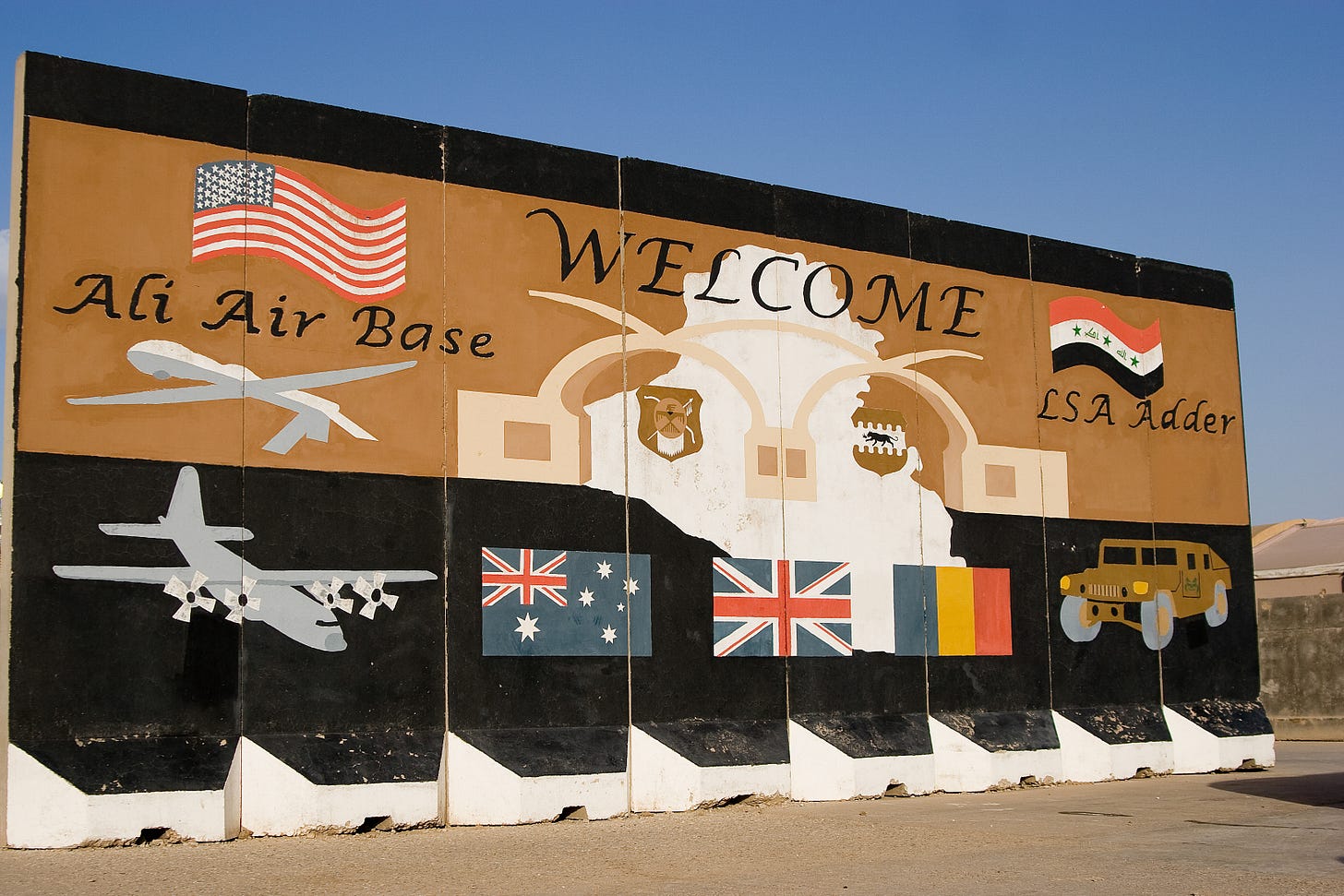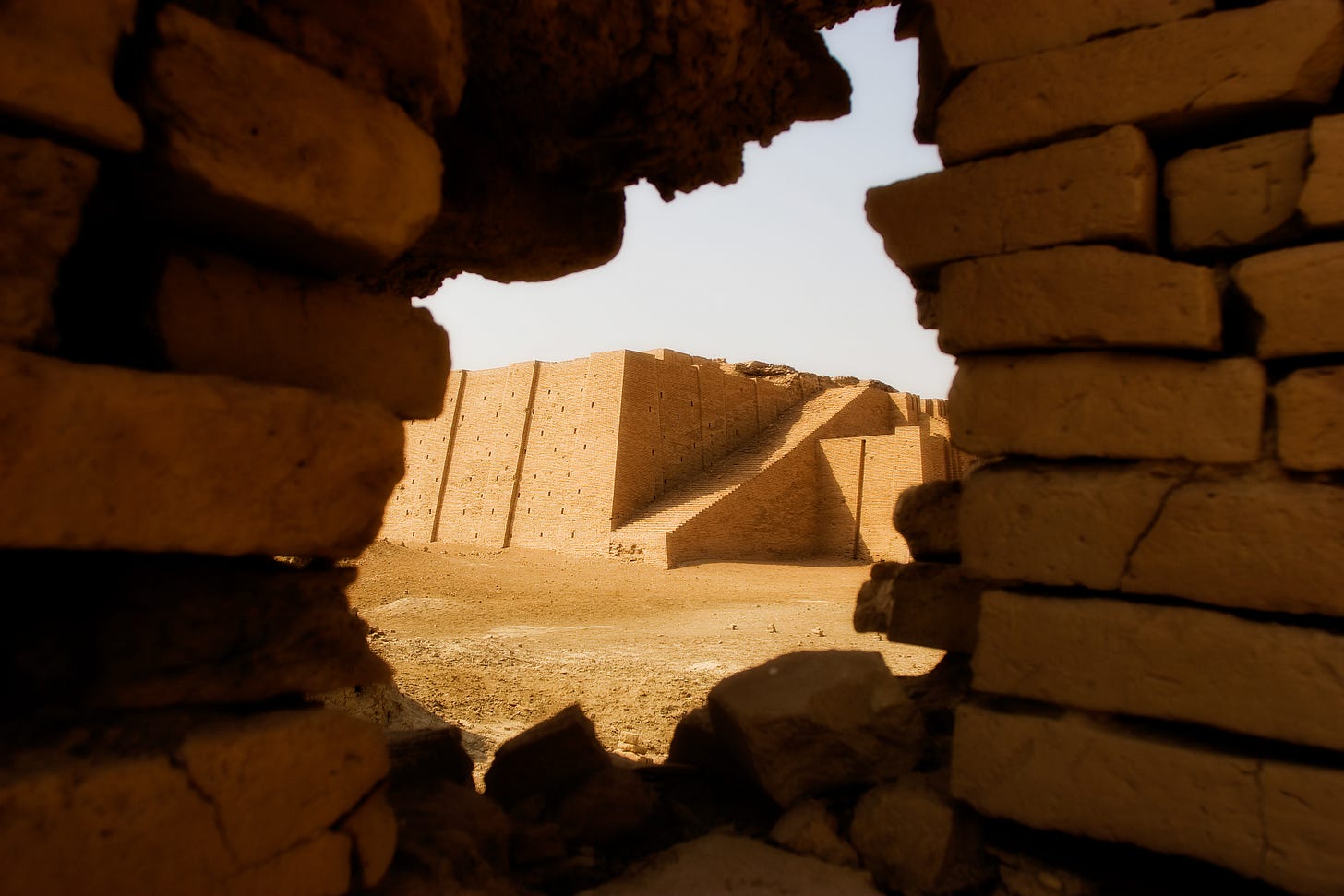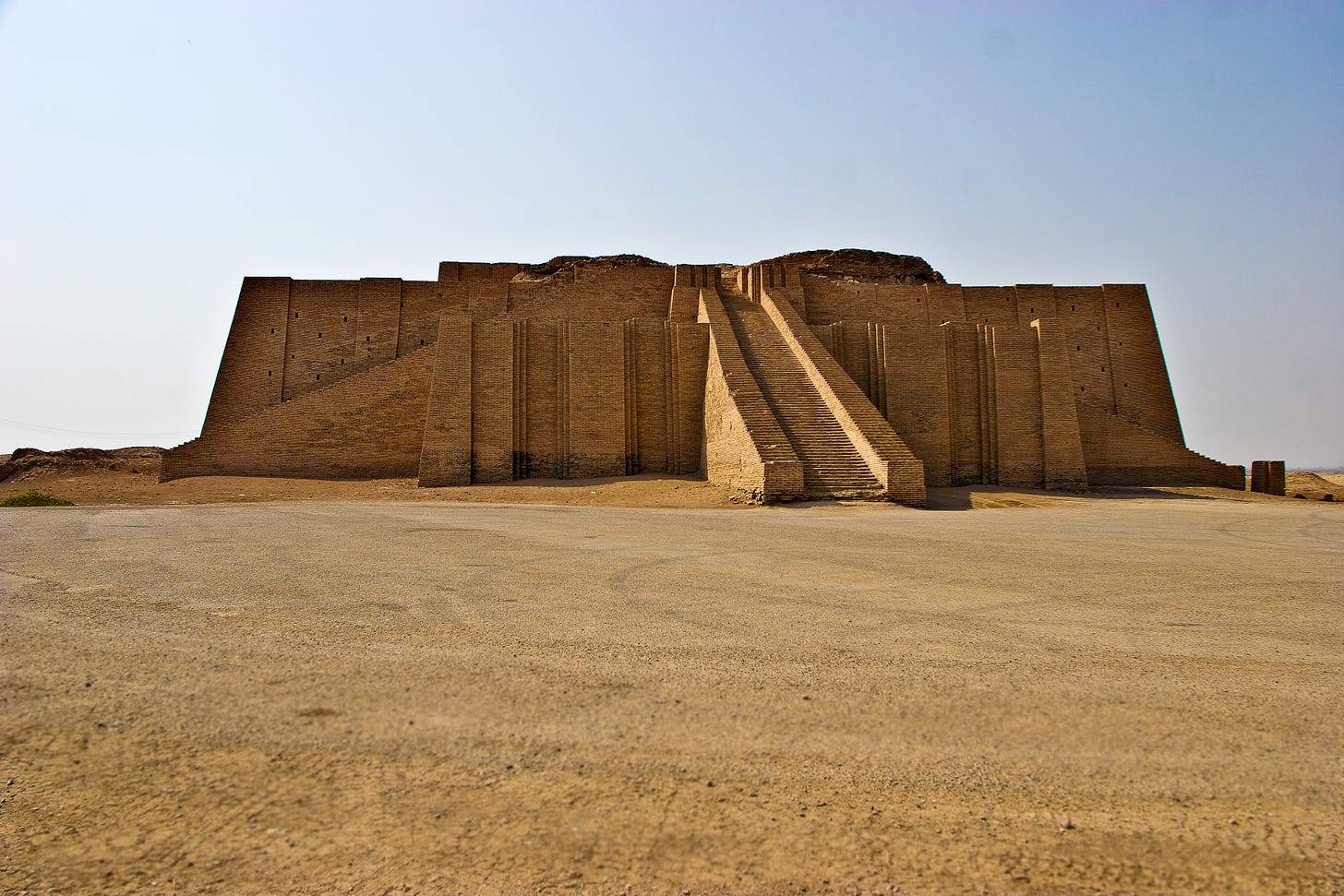Day Trip to the Ziggurat of Ur
Exploring history during the quieter times in Iraq
My second deployment to Iraq had some down time.
Don’t get me wrong, there were still a few rocket attacks, and we had to carry at least our 9mm pistol with us everywhere we went on the base.

But by this point in 2010 the security situation at our relatively remote southern Iraq base was good enough that from time to time we could sign up for trips to go tour the nearby Ziggurat of Ur.
Of course I signed up, and of course I brought my camera.
It was really cool. We were out there for an hour or so, and around, on, and over the entire structure. I recall we also had a guide who filled us in on some of the history.
The Great Ziggurat of Ur: History and Overview
The structure is formally known as the Great Ziggurat of Ur and stands as one of the largest and best-preserved ziggurats in ancient Mesopotamia.
What is a Ziggurat? A ziggurat is a massive tiered structure, a form of stepped pyramid common in ancient Mesopotamia. They were built as part of a temple complex and are believed to have symbolically served as a “mountain” or a “stairway” to heaven, allowing the gods to descend and the priests to ascend.
Location: The ziggurat is located in the ruins of the Sumerian city of Ur (modern-day Tell el-Muqayyar) in present-day Dhi Qar Province, southern Iraq.
Original Date and Builder: It was primarily built around the 21st century BCE (about 4,100 years ago) by King Ur-Nammu of the Third Dynasty of Ur, and completed by his son, King Shulgi. This was a golden age for the city, which served as the capital of an empire controlling much of Mesopotamia.
Dedication: The structure was dedicated to Nanna (also known as Sîn), the Sumerian Moon God, who was the patron deity of the city of Ur.
Construction: The core of the ziggurat is a solid mass of mud-brick, which was then encased in a thick shell of baked-brick set with bitumen (a naturally occurring tar) to protect the structure from the elements.
Key Architectural Features & Later History
Original Appearance: The ziggurat was originally a three-tiered structure, with a shrine or temple to Nanna located on the very top platform. The temple itself has not survived.
Staircases: The most striking feature (which we climbed) is the massive, reconstructed system of three monumental staircases—a central flight and two flanking flights—that all converge at a gatehouse on the first terrace.
Restoration:
Ancient Restoration: The structure collapsed into ruins by the 6th century BCE but was famously restored and enlarged by the last Neo-Babylonian king, Nabonidus.
Modern Restoration: The façade of the lowest level and the monumental staircase were partially rebuilt in the 1980s by order of Iraqi President Saddam Hussein.
When we were there in 2010, we were walking on a foundation built by King Ur-Nammu, restored by King Nabonidus, and re-faced by Saddam Hussein—a true blend of ancient and modern history.
The Biblical Connection: Ur of the Chaldees
Abraham’s Hometown: The Book of Genesis identifies the original home of Abraham’s family as “Ur of the Chaldeans” (or Ur Kasdim).
Genesis 11:31 states: “Terah took his son Abram, his grandson Lot son of Haran, and his daughter-in-law Sarai, the wife of his son Abram, and together they set out from Ur of the Chaldeans to go to Canaan. But when they came to Haran, they settled there.”
Scholarly Consensus: The vast majority of modern archaeologists and biblical scholars believe the city referred to as “Ur of the Chaldeans” is the Sumerian city whose monumental remains you visited in southern Iraq.
The Pagan Center: The Bible and other traditions emphasize that Abraham was called out of a land of idol worship. The Ziggurat of Ur was the massive temple dedicated to the Moon God Nanna (or Sîn), the patron deity of the city. The contrast between this powerful polytheistic center and Abraham’s emerging monotheism is a central theme of his early narrative.
The Date: According to traditional biblical chronology, Abraham would have lived in the early part of the 2nd millennium BCE (roughly 2000–1800 BCE), which is just after the peak of the Ziggurat’s initial construction phase.
Speculative Archaeological Connection
The “House of Abraham”: The British archaeologist Sir Leonard Woolley, who extensively excavated Ur in the 1920s and 30s, identified the foundations of a residential complex near the Ziggurat as a possible “House of Abraham.”
Historical Note: This identification is considered speculative by most historians, but it is an important part of the site’s modern-day identity. In the 1980s, Saddam Hussein officially marked a partially restored house in the residential quarter as the “House of the Prophet Abraham,” reinforcing the site’s claim as a religious and historical landmark.
So, while the archaeological proof of him having lived in a specific house is lacking, we were certainly standing in the ruins of the great city that the Bible identifies as the ancestral home of Abraham before his pivotal journey to Canaan.
(Note: the above paragraphs were Google Gemini assisted, but I double checked the facts, and it does also track with my recollection of the stories the guide told us, especially the potential connection to the biblical figure Abraham)
I often say (while acknowledging my good fortune) that I got way more out of the military than it got out of me. This is a prime example.
I can’t imagine any way that I would have been able to travel to a place like Iraq, and experience this type of history if I had kept my job at the golf course and not hitchhiked to the Air Force Recruiter’s office 36 years ago.
How about you?
Has your job taken you to any interesting places that you probably wouldn’t have seen otherwise?
Til next time,
Todd




